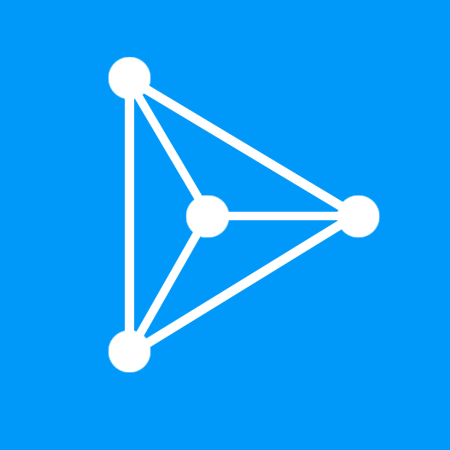https://github.com/Appsilon/shiny.telemetry
Easy logging of users activity and session events of your Shiny App
https://github.com/Appsilon/shiny.telemetry
analytics r r-package rhinoverse shiny
Last synced: 5 months ago
JSON representation
Easy logging of users activity and session events of your Shiny App
- Host: GitHub
- URL: https://github.com/Appsilon/shiny.telemetry
- Owner: Appsilon
- Created: 2019-06-24T16:02:38.000Z (over 6 years ago)
- Default Branch: main
- Last Pushed: 2024-10-17T10:48:03.000Z (about 1 year ago)
- Last Synced: 2024-11-20T04:26:16.956Z (about 1 year ago)
- Topics: analytics, r, r-package, rhinoverse, shiny
- Language: R
- Homepage: https://appsilon.github.io/shiny.telemetry/
- Size: 4.42 MB
- Stars: 66
- Watchers: 25
- Forks: 13
- Open Issues: 17
-
Metadata Files:
- Readme: README.md
- Changelog: NEWS.md
- Contributing: CONTRIBUTING.md
Awesome Lists containing this project
- awesome-shiny-extensions - shiny.telemetry - Track events occurring on a user session and stores them in a local or remote database. (Developer Tools / Monitoring and Analytics)
- jimsghstars - Appsilon/shiny.telemetry - Easy logging of users activity and session events of your Shiny App (R)
README
> Easy logging of users activity and session events of your Shiny App
[](https://cran.r-project.org/package=shiny.telemetry)
[](https://github.com/Appsilon/shiny.telemetry/actions/workflows/main.yml)
[](https://CRAN.R-project.org/package=shiny.telemetry)
[](https://CRAN.R-project.org/package=shiny.telemetry)
[](https://opensource.org/license/lgpl-3-0)
The `shiny.telemetry` R package tracks events occurring on a user session,
such as input changes and session duration, and stores them in a local or remote database.
It provides developers with the tools to help understand how users interact with Shiny dashboards
and answer questions such as: which tabs/pages are more often visited,
which inputs users are changing, what is the average length of a session, etc.
## Install
The `shiny.telemetry` package can be installed from GitHub by using the remotes package:
```R
remotes::install_github("Appsilon/shiny.telemetry", dependencies = TRUE)
```
With `dependencies = TRUE` the suggested packages (required to run some examples)
will be installed in addition to mandatory dependencies.
## How to use in a Shiny Dashboard?
`shiny.telemetry` allows for a minimal setup with only 3 commands
that can track some information about the session:
* When session starts and ends
* The browser version used by the client
* Changes in the inputs _(doesn't track values by default)_
The code below runs a minimal example of a Shiny application that uses `shiny.telemetry`.
The package will keep track of the session information and all changes to the `numericInput`.
_Note_: When using the dashboard nothing is happening from the user's perspective
as all operation run in the background _(either in the server or in Javascript)_.
```r
library(shiny)
library(shiny.telemetry)
telemetry <- Telemetry$new() # 1. Initialize telemetry with default options
shinyApp(
ui = fluidPage(
use_telemetry(), # 2. Add necessary javascript to Shiny
numericInput("n", "n", 1),
plotOutput('plot')
),
server = function(input, output) {
telemetry$start_session() # 3. Minimal setup to track events
output$plot <- renderPlot({ hist(runif(input$n)) })
}
)
```
When inspecting the code above, we can breakdown the 3 lines of code by:
1. Global `Telemetry` object that is used across the different sessions
2. Add necessary Javascript to the UI by calling `use_telemetry()`.
It is used to track browser version.
3. Initialize the session-specific tracking
by calling method `start_session()` of the `Telemetry` object.
## How to access the data?
The developers and administrators of the dashboard can access the data that is gathered by `shiny.telemetry` via a Telemetry object or directly from `DataStorage` via the appropriate provider.
```R
# After running the instrumented app
shiny.telemetry::Telemetry$new()$data_storage$read_event_data("2020-01-01", "2050-01-01")
# Default provider and path for Telemetry$new()
shiny.telemetry::DataStorageSQLite$new(db_path = "telemetry.sqlite")$read_event_data("2020-01-01", "2050-01-01")
```
The package includes an analytics dashboard to view the data.
It is located at `inst/examples/app/analytics` and it should be modified
so that it references the correct `DataStorage` provider and configuration.
## Data providers
There are 3 different types of data providers
that can range from local filesystem storage to a remote Plumber REST API instance.
* Local file:
* SQLite using `DataStorageSQLite` class
* Plain text file using `DataStorageLogFile` class
* Remote SQL database:
* MariaDB using `DataStorageMariaDB` class
* PostgreSQL using `DataStoragePostgreSQL` class
* MS SQL Server using `DataStorageMSSQLServer` class
* Plumber REST API using `DataStoragePlumber` class
* In turn, the Plumber data provider will use one of the other classes above
as the method of data storage.
The setup for plumber requires a valid Plumber instance running on the network
and the communication can be protected.
See Plumber deployment documentation for more information.
## Debugging the Telemetry calls
The package uses the `logger` package internally with the `shiny.telemetry` namespace.
To debug the `shiny.telemetry` calls in the dashboard,
change the threshold of this namespace to `DEBUG`:
```r
logger::log_threshold("DEBUG", namespace = "shiny.telemetry")
```
_note_: This command can be run before the Shiny call or by adding it to the `.Rprofile`.
## Contributing
See [CONTRIBUTING](https://appsilon.github.io/shiny.telemetry/CONTRIBUTING.html).
## Appsilon

Appsilon is a **Posit (formerly RStudio) Full Service Certified Partner**.
Learn more at [appsilon.com](https://www.appsilon.com).
Get in touch [opensource@appsilon.com](mailto:opensource@appsilon.com)
Explore the [Rhinoverse](https://www.appsilon.com/rhinoverse) - a family of R packages built around [Rhino](https://appsilon.github.io/rhino/)!

